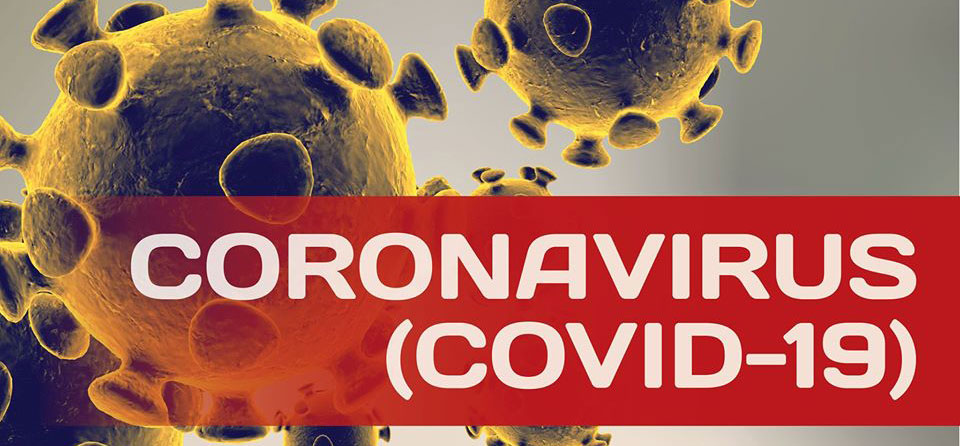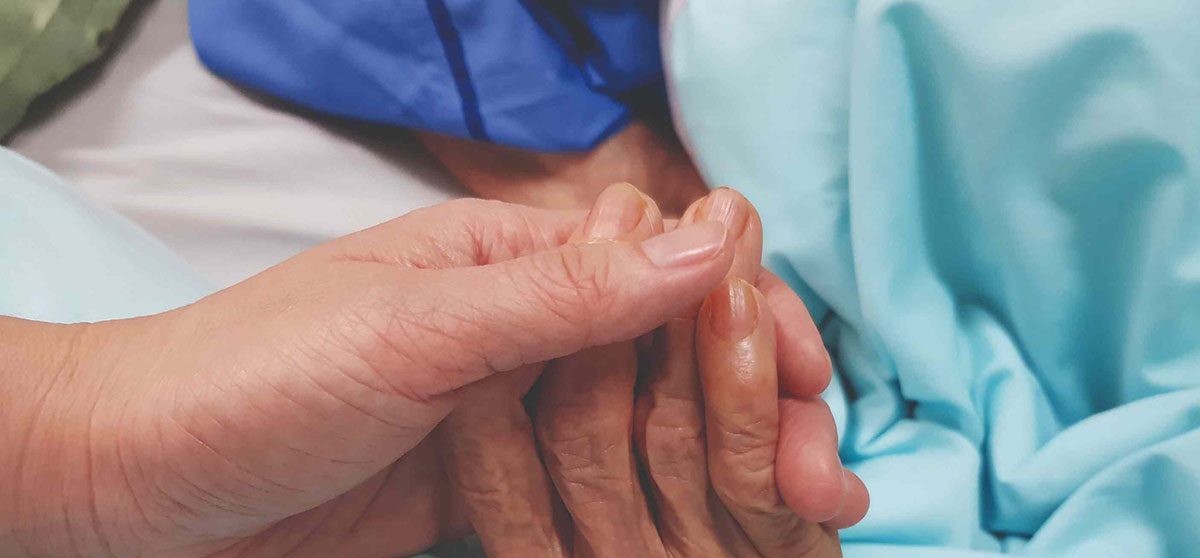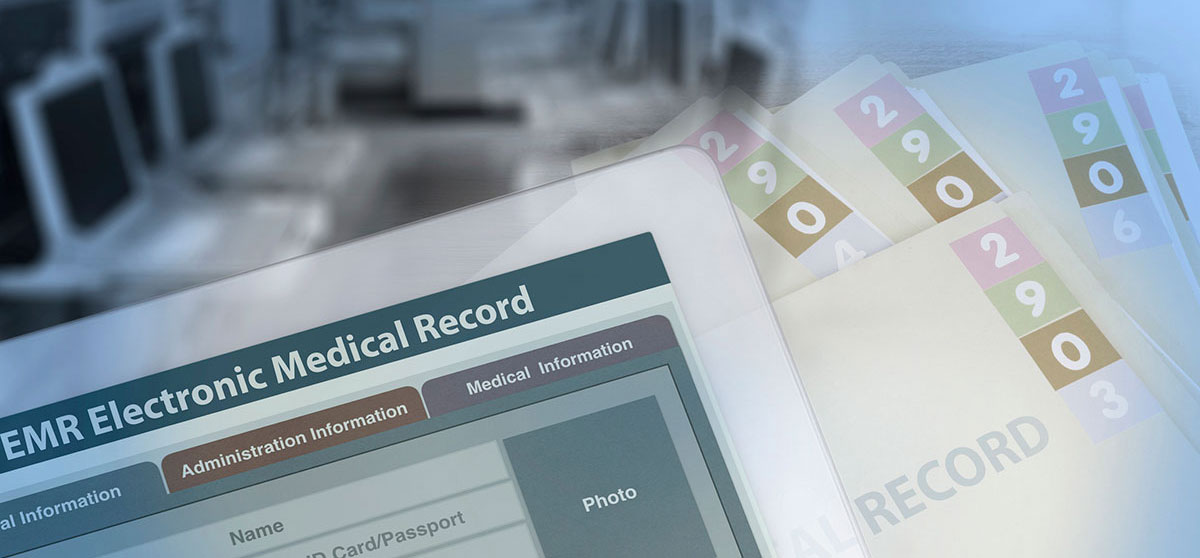By T. Samuel Nwafor, MD, FACP, FAPWCA and Nancy Collins, PhD, RDN, LD, NWCC, FAND
The consequences for the complex wound patient may be severe and long-lasting if we become lax on continued treatment during the coronavirus (COVID-19) pandemic.
While in the middle of a very busy wound clinic, a patient telephoned to cancel her follow up appointment. She had read the hospital’s guidelines for COVID-19 prevention and decided she should not come in because she had a low grade fever. The week prior, the patient had a biosynthetic skin substitute and a total contact cast applied for her complex plantar diabetic foot wound. The cast needed to be removed and her diabetic foot wound examined. We talked her out of canceling her wound appointment and brought her in for cautious screening. She had no cough, no respiratory symptoms, and no significant contact history. Her temperature had returned to normal when it was taken in the clinic.
Shortly thereafter on the same clinic day, we received another call from a patient who had a negative pressure wound therapy device placed on her complex wound several days prior. She needed to come to the wound clinic for a wound examination and a dressing change. She reported a history of chronic allergic rhinitis and was concerned that she would be turned away at the facility due to her occasional cough so she thought it would be better to cancel.
These are just two examples where cancelling scheduled wound follow up appointments in the absence of any meaningful alternative measures to address their medical needs could have resulted in clearly foreseeable catastrophic consequences.
Being Mindful of Existing Conditions
While we have COVID-19 on our minds and are doing our best to fight the battle against this virus, we should be mindful of the fact that other equally deadly medical conditions and diseases are not taking a break. They are not on vacation to give us a chance to fight COVID-19. We must be able to confront the challenges of caring for every patient without falling prey to a single minded focus on one item at the expense of everything else.
As wound care professionals, we all are certainly following the advice and protocols advised by the various governing bodies and regulatory agencies but we must also be mindful of the need to pay attention to the ongoing care of existing medical conditions. This must not be compromised as it could lead to a significant increase in adverse outcomes to the overall detriment of the patients and our care systems.
Every strategy must take into consideration ways to accommodate ongoing medical care of existing conditions in every setting. This is particularly important where the care setting is attached to hospital facilities or large multi-specialty clinics.
The guidelines for screening and intervention must be clear and unambiguous to the patient regarding steps to take to prevent themselves from exposure to the virus. At the same time they must not compromise the care of existing conditions. Patients’ visits and access to their care providers must not be hindered.
This is clinical trench warfare. Our experience on the front lines gives us concern that the preventive strategies for this pandemic, if not properly executed and communicated to existing patients, runs the risk of compromising the care of serious medical conditions in certain patient populations.
Strategies for Continued Care
Implementation of ongoing preventive guidelines must create specific systems to accommodate patient follow up visits to their clinicians without jeopardizing patients or their providers.
These strategies must be clearly communicated to the patients in a timely fashion. Quality metrics must be immediately put in place to ensure and assess the efficacy of such procedures and periodic adjustments made where necessary.
Examples of specific immediate steps that can be taken to mitigate the challenges of the current COVID -19 measures on the complex wound patient include:
- Clinical messaging apps: Health Insurance Portability and Accountability Act (HIPAA) compliant apps can be downloaded in minutes, typically with nominal fees. Many of these messaging platforms also have the capability for picture and video interaction between provider and patient in a secure protected format.
- Video conferencing: When feasible and with appropriate consent, real time video interaction using electronic tablets facilitated by the patient’s own phone can be a useful avenue to conduct virtual remote wound surveillance at home.
- Telemedicine: Subscriptions to telemedicine programs facilitate patient access via advanced video platforms and enhanced remote patient interaction techniques. Some of the paid subscription services can be set up relatively quickly depending on the level of service required and existing infrastructure.
- Adjust clinic appointment patterns: Where appropriate, extend clinic appointments to the maximum timeframe that is unlikely to hinder the surveillance of specific wound characteristics. This strategy does not apply to time dependent interventions like skin grafts, skin substitutes, total contact casts, specialty multi-layer compression dressings, and negative pressure wound therapy.
- Home Health Visits: Increase utilization of home health services and home nursing visitations for wound surveillance and wound dressing management where feasible.
- Third party vendors: With the logistical challenges created in part by restriction of movement and social distancing, patient access to wound dressing supplies may be hindered. For this reason immediate strategies to partner with the relevant third party vendors to optimize patient access should be initiated. This can be achieved through enhanced communication and adjustments in the volume and frequency of deliveries of wound supplies for home wound management. Specific documentation to facilitate insurance authorization may be required and should be given priority consideration when adopting this plan.
Nutritional Optimization
While patients are at home, they should be encouraged to optimize their nutritional status to promote healing and discouraged from treating this time as a snack food windfall. This is particularly important in patients with wounds and diabetes as they may not be as vigilant in monitoring blood glucose levels during this stressful time. Stress itself may also alter blood glucose levels furthering the importance of self-monitoring.
Examples of specific nutritional recommendations to mitigate the challenges of the current COVID -19 measures in the complex wound patient include:
- Continue to eat meals at the usual time. Avoid eating around the clock, which may be more difficult without the structure of going to work or school.
- Conversely, isolation and social distancing may cause a decline in caloric consumption particularly if the patient relied on dining out. Unintended and rapid weight loss impedes wound healing. Family members and neighbors can still check on loved ones and bring meals.
- Stay hydrated. The typical rule of thumb is to consume 1 mL of fluid for every calorie consumed. This means an 1800 calorie diet should include 1800 mL fluid.
- Include a protein source at every meal. Some high protein foods such as meats and eggs may be hard to find during the pandemic. Protein powder or liquid protein can act as a substitute. Many of these products can be ordered online and delivered.
- Utilize ready-to-drink oral nutrition supplements (ONS) to fill any nutritional gaps. These bottled beverages provide the necessary calories and protein and may be used as a meal substitute.
- If meat and eggs are in short supply, the amino acids we typically get from these foods may also be in short supply. Amino acid products designed for wound healing can supply these much needed amino acids.
- Practice good food safety. Now is not the time to contract a foodborne illness.
- Clean and sanitize counter tops
- Wash hands with soap and water for at least 20 seconds before preparing food
- Cook and store food at the proper temperature
- Promptly refrigerate leftovers
- When in doubt, throw it out!
About the Authors: T. Samuel Nwafor, MD, FACP, FAPWCA is Chief of Staff and Medical Director at Promise Hospital in Phoenix, AZ. He is also a board certified wound and hyperbaric medicine specialist at Tempe St Luke’s Wound & Hyperbaric Medicine Center in Tempe, AZ. Nancy Collins, PhD, RDN, LD, NWCC, FAND is a wound care certified registered dietitian based in Las Vegas, NV. Contact the authors via www.drnancycollins.com.




